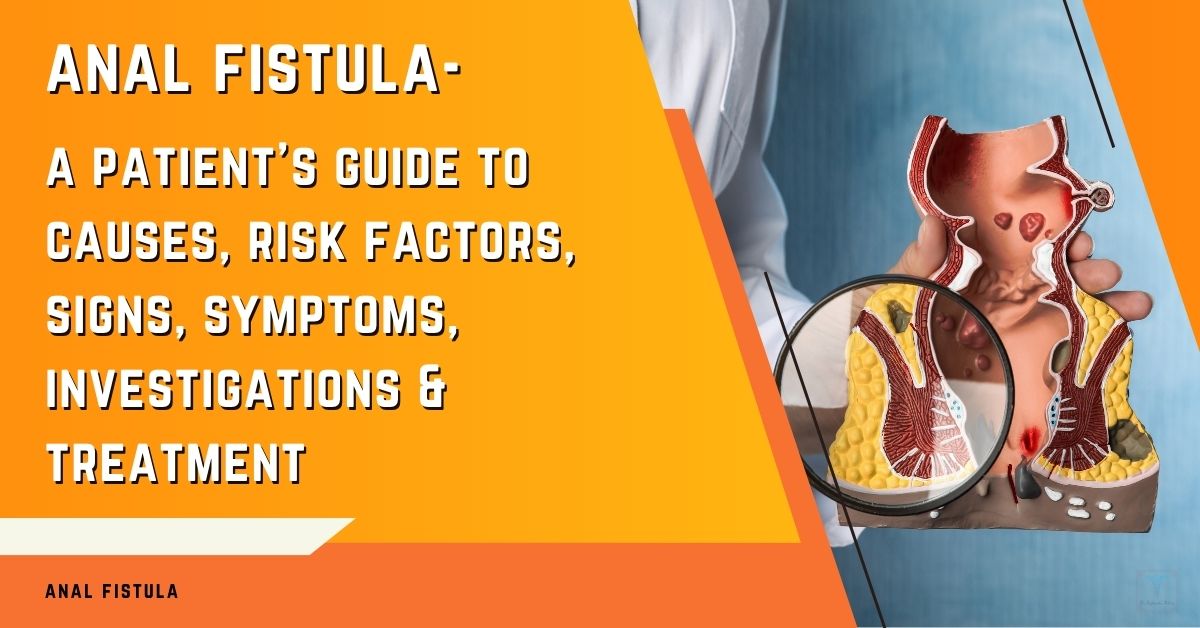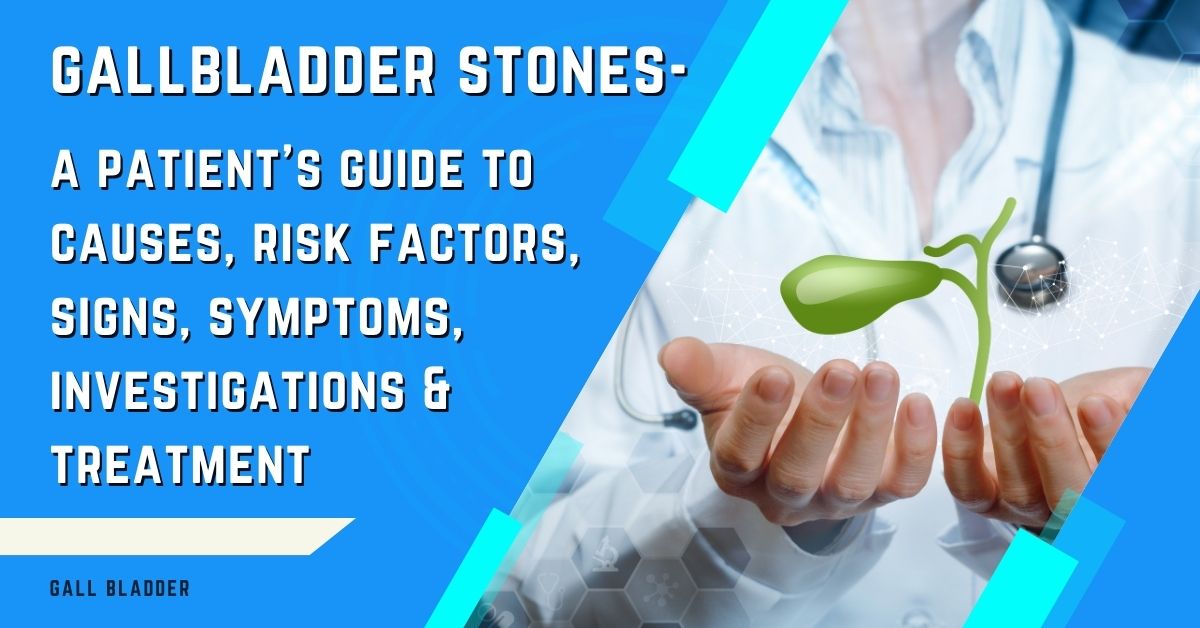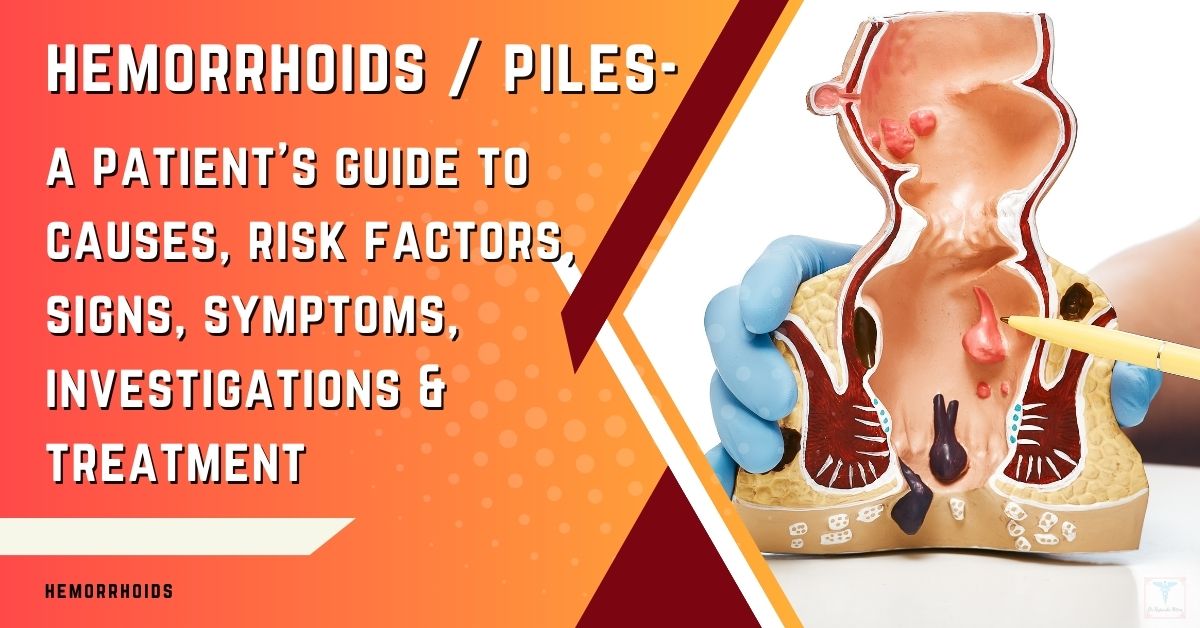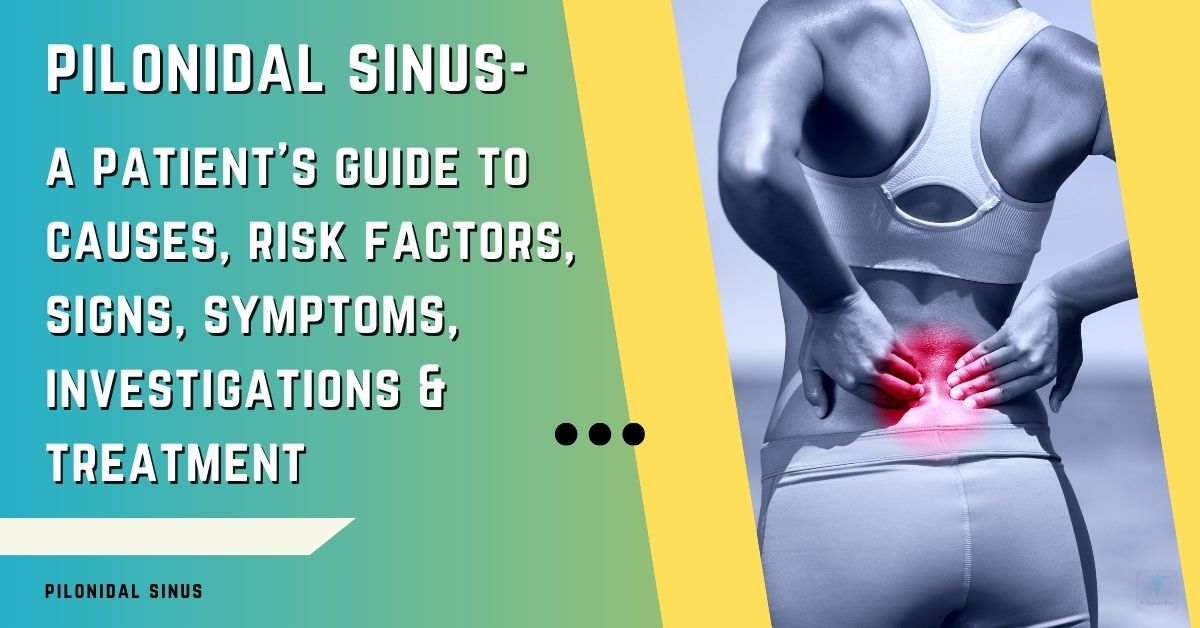If you’ve been experiencing discomfort or pain in your upper abdomen, especially after meals, you might be dealing with cholecystitis. This condition, involving inflammation of the gallbladder, can cause significant discomfort and, if left untreated, lead to more serious complications.
At my practice in Abu Dhabi, I frequently see patients with cholecystitis, and understanding your options is the first step towards effective treatment. This article will guide you through the various treatment approaches for cholecystitis, comparing medical and surgical solutions to help you make informed decisions.
What is Cholecystitis? A Brief Overview
Cholecystitis is essentially the inflammation of the gallbladder, a small, pear-shaped organ located beneath your liver. The gallbladder’s main job is to store bile, a fluid that helps digest fats.
When this organ becomes inflamed, it can disrupt your digestive system and cause a range of symptoms. This inflammation can arise from several causes, with gallstones being a very common one. You can learn more about the gallbladder and its function on reputable websites like the National Institute of Diabetes and Digestive and Kidney Diseases (NIDDK).
Acute vs. Chronic Cholecystitis
Cholecystitis can manifest in two main forms: acute and chronic.
Acute cholecystitis typically arises suddenly, causing intense and often sharp pain in the upper right abdomen, usually brought on by a gallstone blocking the gallbladder’s duct. This condition usually requires prompt medical attention.
On the other hand, chronic cholecystitis involves long-term, less severe inflammation, often caused by repeated attacks of acute cholecystitis, long-standing gallstones or other underlying gallbladder problems. It can lead to a thickened gallbladder wall and can produce more vague and less dramatic symptoms.
Why is Treatment Necessary?
Treatment for cholecystitis is crucial for several reasons. Untreated cholecystitis can lead to various complications, including severe infections, gallbladder rupture, or even pancreatitis (inflammation of the pancreas), among others. These complications can have life-threatening consequences, so early diagnosis and treatment are essential to prevent such serious outcomes. You can also refer to the Mayo Clinic’s information on cholecystitis for more details.
Common Symptoms of Cholecystitis
Recognizing the symptoms of cholecystitis is key to seeking timely care. Here are some common signs to watch out for:
- Intense pain in the upper right or mid-upper abdomen, often radiating to the back or shoulder.
- Pain that intensifies after meals, especially fatty or heavy meals.
- Nausea and vomiting.
- Tenderness when you press on the upper right abdomen.
- Fever and chills (especially with acute cholecystitis).
- Jaundice (yellowing of the skin and eyes), in some cases, indicating a bile duct obstruction.
- Indigestion and bloating
If you experience any of these symptoms, it is important to seek medical advice promptly. As a Specialist Laparoscopic Surgeon in Abu Dhabi, I have extensive experience diagnosing and treating cholecystitis. Early consultation can greatly improve your treatment outcomes.
Medical Treatment for Cholecystitis: A Conservative Approach

While surgery is often the definitive solution for cholecystitis, particularly in acute cases or for those with gallstones, medical treatment plays an important role in managing the symptoms and in certain situations, aiming to reduce inflammation. This conservative approach is especially useful in the initial stages of cholecystitis, and may be suitable for individuals not immediately requiring or opting for surgical intervention.
Medical management is also frequently used for pain relief and to stabilize a patient before surgery. It’s important to understand the goals, medications, and other supportive measures associated with this treatment strategy.
Goals of Medical Management
The primary goals of medical management for cholecystitis are to:
- Relieve Pain: Reduce discomfort and pain associated with the inflammation.
- Reduce Inflammation: Target and minimize the inflammation of the gallbladder.
- Control Infection: If an infection is present, medical treatment aims to eliminate it.
- Manage Symptoms: Alleviate symptoms like nausea, vomiting, and fever.
- Stabilize the Patient: Prepare the patient for potential surgery if required or if the symptoms do not subside.
- Prevent Complications: By controlling the symptoms and the inflammation, medical management aims to prevent more serious complications from developing.
Medications Used in Medical Treatment
Several types of medications are typically used in the medical management of cholecystitis. The selection of these medications will depend upon the presentation of the patient and your doctor’s evaluation.
Pain Relievers (Analgesics)
Pain relievers, or analgesics, are crucial for managing the pain associated with cholecystitis. Commonly used options include:
- Nonsteroidal anti-inflammatory drugs (NSAIDs): such as ibuprofen and diclofenac, which can reduce both pain and inflammation.
- Paracetamol (Acetaminophen): Useful for pain relief, especially in patients who cannot take NSAIDs.
- Stronger Analgesics: In cases of severe pain, stronger opioid-based painkillers may be needed on a short term basis. These medicines can have side effects, so are used cautiously.
Anti-inflammatory Drugs
Beyond simple pain relief, anti-inflammatory drugs are aimed at reducing the inflammation of the gallbladder. NSAIDs, as mentioned above, serve a dual purpose in both pain relief and reducing inflammation. In addition, Steroids are sometimes used to reduce inflammation, particularly if the inflammation is severe or not responding to other drugs.
Antibiotics (when infection present)
If the cholecystitis is accompanied by an infection, antibiotics become a vital part of the medical treatment. Broad-spectrum antibiotics are often used initially to cover a range of possible bacterial infections.
The specific choice of antibiotic will depend on the severity of the infection and the type of bacteria suspected by your treating physician. It is very important to take a full course of antibiotics as per prescription for complete cure.
Antiemetics (for nausea and vomiting)
Nausea and vomiting are common symptoms of cholecystitis, especially when the inflammation is severe. Antiemetic drugs are prescribed to help control these symptoms, making the patient more comfortable.
Common options include ondansetron or metoclopramide, these work on the brain centres to control nausea and vomiting.
Other Supportive Measures
In addition to medications, several supportive measures can help manage cholecystitis and promote healing
Dietary modifications
A low-fat diet is often recommended to reduce the workload on the gallbladder. Avoiding fatty foods can help prevent gallbladder contractions and reduce pain. Also, smaller and more frequent meals can be better tolerated than larger meals. The American Gastroenterological Association offers reliable resources on dietary recommendations for digestive health.
Hydration
Adequate fluid intake is important for overall health and can help prevent dehydration. If a patient is vomiting, they may need Intravenous fluids given via a drip in the arm.
Rest
Rest allows your body to focus on healing. It’s advised to avoid strenuous activities during a flare-up of cholecystitis. Reducing physical activity can help reduce symptoms.
When is Medical Treatment Appropriate?
Medical treatment is generally appropriate in the following scenarios:
- Mild Cases: When cholecystitis symptoms are mild and uncomplicated.
- Non-Surgical Candidates: When a patient has other serious health conditions that make surgery risky or impossible.
- Initial Management: As the first step in managing symptoms before considering surgery.
- Acute attack: To provide symptomatic relief and stabilization before considering surgical treatment.
Limitations of Medical Treatment
It’s important to understand the limitations of medical treatment for cholecystitis. While medications and other supportive measures can provide pain relief, control inflammation and help you feel more comfortable, they do not treat the underlying cause of the condition.
Medical management alone may not be effective in cases involving gallstones or severe inflammation and does not cure the disease, but manages the symptoms. Surgery might eventually be required if the underlying cause of the problem is not treated.
In my practice in Abu Dhabi, I often see patients who have initially tried medical treatment, but eventually require surgery.
Surgical Treatment for Cholecystitis: When Surgery Becomes Necessary

While medical management can be effective in alleviating symptoms of cholecystitis, surgical intervention is often necessary to address the underlying causes, particularly when gallstones are involved or when the inflammation is severe. Surgery becomes the recommended treatment when conservative methods fail to provide long-term relief, or when the condition is likely to recur.
In my practice as a Specialist Laparoscopic Surgeon in Abu Dhabi, I’ve seen firsthand how surgery can provide definitive treatment and improve the quality of life for patients struggling with cholecystitis. It is often the best solution for preventing further complications from the disease.
Goals of Surgical Management: Addressing the Root Cause
The primary goal of surgical treatment for cholecystitis is to eliminate the source of inflammation and the associated symptoms by removing the diseased gallbladder. This approach achieves several important objectives:
- Removal of the Gallbladder: The primary objective is to remove the inflamed gallbladder, thereby eliminating the source of ongoing pain and infection.
- Preventing Recurrence: By removing the gallbladder, the risk of recurrent cholecystitis is eliminated.
- Prevention of Complications: Surgery helps to prevent potential severe complications of cholecystitis.
- Provide Long term Relief: It offers a long term solution for this disease.
Laparoscopic Cholecystectomy: The Gold Standard
Laparoscopic Cholecystectomy is considered the gold standard for surgical treatment of cholecystitis. This minimally invasive technique has revolutionized gallbladder surgery, offering significant benefits compared to traditional open surgery. You can find more details on laparoscopic surgery from the Society of American Gastrointestinal and Endoscopic Surgeons (SAGES).
How Laparoscopic Surgery is Performed
In laparoscopic cholecystectomy, 4 small incisions are made in the abdomen. Through these incisions, a special instrument called a laparoscope (a thin tube with a camera) is inserted, along with other specialized surgical tools. The surgeon then removes the gallbladder while viewing the surgical field on a monitor. Carbon dioxide gas is used to inflate the abdomen and provide the surgeon with a clear view. The entire procedure is done with precision and care. In my practice in Abu Dhabi, this is my preferred method of choice due to its various advantages
Advantages of Laparoscopic Surgery
Laparoscopic surgery offers numerous advantages for patients:
- Minimally Invasive: Smaller incisions result in less trauma to the body.
- Reduced Pain: Postoperative pain is significantly less compared to open surgery.
- Shorter Hospital Stay: Patients typically spend less time in the hospital.
- Faster Recovery: The recovery period is generally shorter, allowing patients to return to normal activities sooner.
- Smaller Scars: Smaller scars are a cosmetic benefit of this method.
- Reduced Risk of Infection: The risk of wound infection is generally lower compared to open surgery.
- Earlier resumption of diet: Patients can generally eat normally sooner after laparoscopic surgery than after an open surgery.
Open Cholecystectomy
While laparoscopic cholecystectomy is the standard, open cholecystectomy, a traditional surgical method, is still used when needed.
When is Open Surgery Necessary
Open cholecystectomy is required when:
- Severe Inflammation: When the gallbladder is severely inflamed, infected, or has scar tissue from repeated attacks, making laparoscopic surgery too difficult or unsafe.
- Complex Anatomy: If the patient has unusual or complex anatomy that makes laparoscopic surgery risky.
- Surgical Complications: When complications arise during a laparoscopic procedure, requiring conversion to an open approach.
- Patient Factors: When specific patient conditions or pre-existing health issues make open surgery a safer option.
- Unsuccessful Laparoscopic Approach: In the event that the laparoscopic approach is unsuccessful, it may need to be converted to an open procedure.
Disadvantages of Open Surgery
Open surgery has several drawbacks compared to laparoscopy:
- Larger Incision: Requires a larger incision, leading to more post-operative pain.
- Longer Hospital Stay: Patients typically require a longer hospital stay.
- Slower Recovery: Recovery is generally slower, and patients require more time to return to their normal activities.
- Greater Risk of Complications: There is a greater risk of wound infection and other complications.
- Larger Scar: A larger scar is a cosmetic disadvantage of the open surgical method.
The Surgical Procedure: Step-by-Step Overview
Regardless of the approach, the surgical procedure involves the following general steps:
- Anesthesia: The patient is put under general anesthesia to ensure they are comfortable and pain-free during the surgery.
- Incision: The surgeon makes the necessary incisions (small for laparoscopic, larger for open surgery).
- Exposure: The gallbladder is carefully exposed, and the surrounding structures are identified.
- Dissection: The gallbladder is detached from the liver and the cystic duct and cystic artery are isolated, clipped and divided.
- Removal: The gallbladder is removed and sent for histopathological evaluation.
- Closure: The incisions are closed with sutures or staples.
- Recovery: The patient is then taken to the recovery room and closely monitored.
As a highly experienced Laparoscopic Surgeon in Abu Dhabi, I have completed thousands of such operations with excellent outcomes. Patient safety is paramount to me and my surgical team.
Recovery After Surgery
Post-surgery recovery depends largely on whether a laparoscopic or open approach was used. With laparoscopic surgery, recovery is usually faster and more comfortable.
Post-Operative Pain Management
Pain management is an important aspect of post-operative care. Pain medication, such as analgesics, are prescribed to manage any post-surgical discomfort. In laparoscopic surgery, post op pain is generally mild and well managed by simple analgesics.
Dietary Adjustments
Initially, a liquid diet is started and then gradually progressed to solid food. A low-fat diet is usually advised in the immediate post op period, although some patients may have no issues tolerating any food. It’s important to follow your doctor’s guidance on dietary changes in the immediate post-operative period.
Expected Recovery Timeline
The typical recovery timeline is as follows:
- Laparoscopic surgery: Most patients can return to work in 1-2 weeks. Full recovery is usually within a month.
- Open surgery: Recovery is longer, usually requiring 4-6 weeks for a return to work. Full recovery can take 2-3 months.
Potential Risks and Complications
While surgery is generally safe, there are potential risks and complications associated with any surgical procedure. These include:
- Infection: Risk of infection at the incision site.
- Bleeding: Potential for bleeding during or after surgery.
- Injury to other organs: Though uncommon, there is a risk of injury to surrounding organs such as bile duct, small bowel, liver etc.
- Hernia: Possibility of developing a hernia at the incision site.
- Adverse Reaction to Anesthesia: Allergic or other reaction to anesthesia used during the procedure.
- Retained Gallstones: In rare cases, a gallstone can remain in the bile duct requiring further treatment.
As a Specialist Laparoscopic Surgeon in Abu Dhabi, I always ensure that all measures are taken to minimize these risks. My team and I take all precautions to ensure a safe and successful surgery.
Medical vs. Surgical Treatment: A Comparative Analysis
Choosing the right treatment for cholecystitis can feel overwhelming. Understanding the differences between medical and surgical approaches is essential in making an informed decision that aligns with your specific needs and circumstances.
This section will provide a clear comparative analysis to help you weigh your options effectively. As a Specialist Laparoscopic Surgeon practicing in Abu Dhabi, I can help you navigate these choices based on your specific case.
Comparative Table: Medical vs. Surgical Treatment
To provide a side-by-side comparison, here is a table summarizing the key differences between medical and surgical treatment for cholecystitis:
| Factor | Medical Treatment | Surgical Treatment (Laparoscopic) |
| Treatment Type | Conservative Management | Definitive Treatment |
| Approach | Medications, diet modification, and supportive care | Removal of the gallbladder |
| Effectiveness | Manages symptoms, may not address the root cause | Eliminates the source of inflammation and prevents recurrence |
| Relief of Symptoms | Temporary relief; may have recurring symptoms | Long-term relief of symptoms |
| Pain Control | Pain relievers, but may not be long-lasting | Effectively removes cause of pain |
| Recovery Time | No recovery time associated with the treatment itself | Faster recovery (1-2 weeks typically) |
| Hospital Stay | Typically outpatient basis | Shorter hospital stay (usually 1-2 days or outpatient) |
| Risks/Complications | Side effects of medication and temporary symptomatic control | Risks of surgery (infection, bleeding, organ damage) |
| Suitable For | Mild cases, non-surgical candidates, initial symptom control | Severe cases, gallstones, recurring symptoms, fit for surgery |
| Cost | Lower cost in the short term | Higher initial cost but long term cost effective due to decreased recurrences |
Situations Favoring Medical Management
Medical management might be the preferred approach in the following circumstances:
- Mild Symptoms: When symptoms are mild, occasional and tolerable.
- Contraindications to Surgery: If a patient has serious health conditions that make surgery risky or impossible.
- Initial Symptom Control: As an initial step to control symptoms before making a decision about surgery.
- Patient Choice: Some patients may choose a medical approach for personal reasons.
- Acute attack: To provide symptomatic relief and stabilization before considering surgical treatment.
- Pregnant Patients: Surgical intervention may not be preferred during pregnancy. So, medical management will be the preferred option in pregnant patients.
Situations Favoring Surgical Intervention
Surgery is generally the recommended treatment when:
- Severe Symptoms: When symptoms are severe, persistent, or not responding to medical treatment.
- Gallstones Present: If gallstones are the underlying cause of cholecystitis and are likely to cause repeated attacks.
- Recurrent Attacks: In cases of repeated episodes of cholecystitis.
- Complications: If complications of cholecystitis occur (such as infections or pancreatitis).
- Chronic Cholecystitis: In cases of long standing or chronic cholecystitis.
- Patient Preference: When patients desire a more permanent solution.
When Should You Choose Medical Management vs. Surgical Intervention
Deciding between medical and surgical treatment for cholecystitis is a personalized decision that depends on individual factors, the severity of the condition, and your overall health status. Here are some points to consider:
- Severity of Symptoms: Are your symptoms mild and tolerable, or are they severe and debilitating?
- Presence of Gallstones: If gallstones are present, surgery might be the more effective long-term solution.
- General Health: Do you have other health conditions that might make surgery risky?
- Risk Tolerance: How do you weigh the potential risks and benefits of each approach?
- Long-Term Goals: Are you looking for temporary symptom relief or a long-term solution?
- Surgical Opinion: Seeking a surgical opinion from an experienced Laparoscopic Surgeon can be useful in deciding the best treatment approach.
In my practice, I work with each of my patients to find the approach that best suits them and their needs. A thorough consultation will give us a better understanding of your unique situation.
Making an Informed Decision About Your Cholecystitis Treatment
Choosing the right treatment for cholecystitis requires careful consideration of your individual circumstances and preferences. It’s not about a one-size-fits-all solution; rather, it’s about finding the best approach for you.
This section aims to empower you with the information you need to make an informed decision about your gallbladder health. As a Specialist Laparoscopic Surgeon based in Abu Dhabi, I believe in the importance of patient-centered care.
The Importance of Personalized Care and Patient Choice
Every case of cholecystitis is unique, and your treatment plan should be tailored to your specific needs. Factors such as the severity of your symptoms, your overall health, your lifestyle, and your personal preferences should all be taken into consideration.
Personalized care means that your treatment plan is not just based on your medical condition, but also incorporates your values and expectations. The decision about which treatment pathway to choose should be made mutually by the patient and their surgeon after complete evaluation of the patient’s individual needs and medical factors.
The Role of a Surgeon (like me, Dr. Rajarshi Mitra, Specialist Laparoscopic Surgeon)
As a Specialist Laparoscopic Surgeon in Abu Dhabi, my role is not just to perform surgery but also to guide you through the entire process. I will:
- Provide Expert Assessment: Thoroughly evaluate your condition to understand the severity and underlying causes of your cholecystitis.
- Discuss Treatment Options: Clearly explain the available options, including the pros and cons of each approach.
- Offer Personalized Recommendations: Provide tailored treatment recommendations based on your individual needs and preferences.
- Address Concerns: Answer all your questions and address any concerns you may have about your treatment options.
- Perform Skilled Surgery: If surgery is required, provide the highest level of care using the latest techniques in minimally invasive surgery.
Questions to Ask Your Doctor
To ensure you make an informed decision, it’s important to actively engage with your doctor. Here are some questions you should ask:
- What type of cholecystitis do I have (acute or chronic)?
- What are my treatment options, and what are the benefits and risks of each?
- Is medical treatment sufficient in my case, or do you recommend surgery?
- If surgery is recommended, what type of procedure is best for me (laparoscopic or open)?
- What is the expected recovery time for each option?
- What are the potential risks and complications associated with the recommended treatment?
- How will this treatment affect my lifestyle and daily activities?
- What are the costs associated with the treatment?
- What kind of follow up will I need after treatment?
- What are the chances of recurrence of the disease?
By asking these questions, you can gain a better understanding of your situation and make an informed choice about your treatment path.
Seeking Expert Medical Advice: When to Get a Second Opinion
Sometimes, it can be beneficial to seek a second opinion, particularly if you:
- Are Unsure: If you are not completely sure about the proposed treatment plan, or if you feel overwhelmed.
- Have Complex Issues: If you have a complex or unusual case of cholecystitis.
- Want to Explore Options: If you want to explore all available options before making a decision.
- Lack Confidence: If you lack confidence in the initial medical advice.
Seeking a second opinion from another experienced professional, such as a Specialist Laparoscopic Surgeon in Abu Dhabi, can give you additional insights and reassure you that you are making the right decision. A second opinion can help you make a confident and well-informed choice. If you choose to seek a second opinion, I would be happy to provide a thorough consultation and review your case.
Empowering You Towards Better Gallbladder Health
Navigating cholecystitis and its treatment options can be challenging. However, with the right information and support, you can make informed decisions that lead to better gallbladder health. This concluding section recaps the key points discussed and provides final thoughts to reassure you on your journey to better health. As a Specialist Laparoscopic Surgeon practicing in Abu Dhabi, I am committed to helping you navigate this process and find the best solutions for your needs.
Recap of Key Points
Let’s briefly recap the key points discussed in this article:
- Cholecystitis is the inflammation of the gallbladder, which can be acute or chronic.
- Medical Treatment aims to manage symptoms and reduce inflammation, but it doesn’t treat the underlying cause.
- Surgical Treatment, particularly laparoscopic cholecystectomy, is often the definitive solution for gallstones and severe inflammation.
- Laparoscopic Surgery is the gold standard due to its minimally invasive nature, reduced pain, and faster recovery.
- Personalized Care is crucial in choosing the right treatment plan.
- Informed Decision-Making through consulting your doctor is crucial in arriving at a treatment choice.
Understanding these key points will empower you to engage more effectively in your care.
Final Thoughts and Reassurance
If you’re facing a diagnosis of cholecystitis, know that you are not alone. There are effective treatment options available, and with the right guidance, you can achieve a positive outcome. Whether you opt for medical management or surgical intervention, the key is to be informed, proactive, and collaborative with your medical team.
I encourage you to use the information provided in this article to make informed decisions and feel confident in your chosen path. As a Specialist Laparoscopic Surgeon in Abu Dhabi, I’m dedicated to helping you achieve better gallbladder health and overall well-being.
About Dr. Rajarshi Mitra: Your Specialist Laparoscopic Surgeon in Abu Dhabi
Choosing a surgeon you trust is a crucial part of your journey to better health. In this section, I’d like to share a bit more about myself and my practice, demonstrating why I’m a trusted choice for laparoscopic surgery in Abu Dhabi.
Introduction to my Practice
I am Dr. Rajarshi Mitra, a Specialist Laparoscopic Surgeon practicing in Abu Dhabi, UAE. My practice is dedicated to providing high-quality surgical care with a focus on minimally invasive techniques. We are committed to offering personalized attention, compassionate care, and the most up-to-date medical practices. We are conveniently located in Abu Dhabi and are easily accessible to patients from within and outside Abu Dhabi.
My Surgical Experience and Expertise in Laparoscopic Cholecystectomy
With over 20 years of surgical experience, I am a highly skilled and accomplished surgeon with a special interest and expertise in laparoscopic cholecystectomy. I am a Fellow of the American College of Surgeons (FACS), a testament to my commitment to excellence in surgical practice. I have performed thousands of successful laparoscopic gallbladder surgeries, and have helped countless patients to overcome the challenges of cholecystitis and return to healthy lives.
My practice focuses on using the latest, most advanced surgical techniques to reduce patient trauma, pain and complications and promote faster recovery. I always aim for the best possible outcome for my patients, with patient safety as my utmost priority.
Contact Information and Consultation Details
If you are experiencing symptoms of cholecystitis or have been diagnosed with the condition, I encourage you to seek expert medical advice. You can contact my practice to schedule a consultation in Abu Dhabi, where we can discuss your case in detail and determine the best treatment approach for you.
Contact Details and Practice Information
If you are experiencing symptoms of gallbladder issues, you can book an appointment with Dr. Mitra for expert consultation and care, using the following contact information:
- Website: https://drrajarshimitra.com/appointment/
- Phone: +971-509542791
- Email: surgeon@drrajarshimitra.com
- Address: https://openmylink.in/CAubp
- NMC Specialty Hospital, Department of Surgery, Zayed The First St – Zone 1 – Abu Dhabi – United Arab Emirates.
I am here to answer your questions, address your concerns, and help guide you towards better gallbladder health. My team and I are committed to providing you with the best possible care.
By Dr. Rajarshi Mitra, Specialist Laparoscopic Surgeon, Abu Dhabi, UAE
Disclaimer: This article is intended for informational purposes only and should not be considered medical advice. Always consult with a qualified healthcare professional for diagnosis and treatment.



















